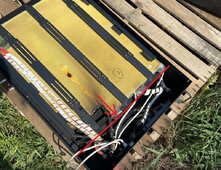electric
Solar Enthusiast
Leaking cells do not cause fusing of BMS voltage sense wires, there is no sensible connection between these events.
Burned wires and burn marks on PCBs is inevitably a BMS design failure, some failure mode they did not consider when designing cell sensing and balancing circuits. In a normal BMS design those circuits are high enough impedance to prevent wire melting, so melted wires are certainly caused by a BMS failure. And seeing how there are multiple similar failures happening at different customer's systems just confirms a major BMS design fault.
It looks like people you are talking to are trying to shift blame from BMS to something else.
Burned wires and burn marks on PCBs is inevitably a BMS design failure, some failure mode they did not consider when designing cell sensing and balancing circuits. In a normal BMS design those circuits are high enough impedance to prevent wire melting, so melted wires are certainly caused by a BMS failure. And seeing how there are multiple similar failures happening at different customer's systems just confirms a major BMS design fault.
It looks like people you are talking to are trying to shift blame from BMS to something else.





